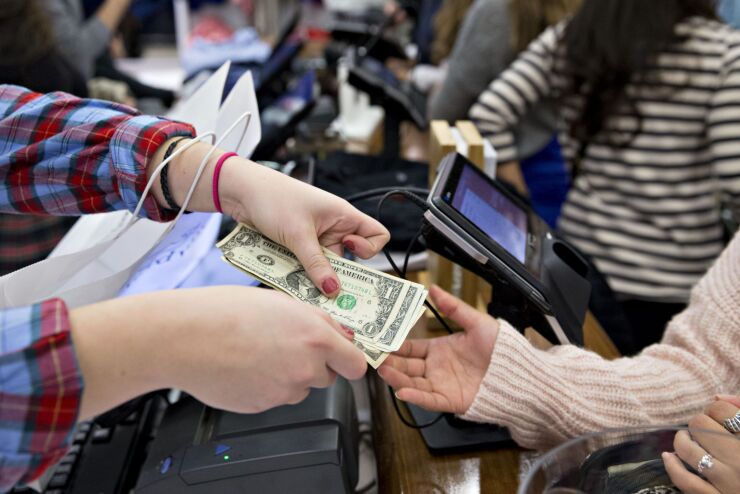The use of cash took a dive in the early days of the coronavirus pandemic, but Brink’s Co.’s Doug Pertz is on a crusade to prove paper currency is far from dead.
From his perch as chief executive of the armored-car company, Pertz watched as consumers turned to online shopping in droves during the early days of the pandemic, crimping his business of sending out trucks to shuttle money back and forth between banks and retailers.
But now, as retailers reopen, the company has seen a 20% increase since January in the amount of cash processed in its own systems, signaling that as users return to stores they’re choosing to pay with cash.

“I worry about it all the time,” Pertz said in an interview. “But even during the pandemic, there was more cash usage across the board.”
Before this year, Brink’s had seen its stock price soar, ending 2019 close to an all-time high after climbing 40% over 12 months. Since then, shares have lost more than half their value, making Brink’s one of the worst performers in the S&P 400 Industrials Index, as investors worry whether consumers will return to stores — and resume using cash — after the pandemic releases its grip on global commerce.
A Federal Reserve survey conducted in May shows they just might. Among consumers who made an in-person payment in the previous two months, 59% reported using cash at least once, according to the study. That’s up from the 57% of consumers who reported using cash in the central bank’s 2019 survey.
Despite the explosion of digital payments in recent years, U.S. consumers have stubbornly stuck with using cash, especially for small-value transactions. Paper currency is used for almost half of all purchases under $10, and 40% of those $10 to $25.
But the pandemic has at least undercut the idea that cash is king. For months, consumers were forced to shelter in place, leaving them with little choice but to do much of their shopping online, where cash typically isn’t an option. In the early days of the pandemic, some physical stores sought to limit customer use of cash as a way of protecting their employees. And a nationwide coin shortage prompted many retailers to ask consumers to pay with cards if they couldn’t come up with exact change.
Pertz is quick to point out that cash and coins carry fewer germs than credit cards, with the virus tied to the COVID-19 pandemic able to live on plastic for as long as 70 hours, compared with 25 hours for cardboard.
“The transmission of COVID is really done through air particles and not surfaces, but even if it was done by surfaces, cash is one-third as likely to be a transmitter,” he said.
During the height of nationwide lockdowns, Brink’s trucks were making 32% fewer stops. By July, the company had recovered to 83% of its previous volume. And all of its customers that had reopened were accepting cash.
Brink’s, for its part, is doing what it can to help store employees, who may be nervous about germs, touch physical money less often. New products from the company allow retailers to accept bills and have them deposited more quickly in their bank accounts.
“Our retailers are looking to just get back up and running and be able to accept cash,” Pertz said. “Because it is being used.”





